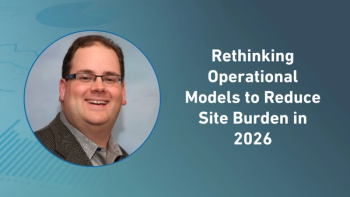
Industry Technology Providers’ Crystal Ball: Trends to Inspire a More Connected 2022
What the industry’s most inspiring technology innovators see coming in 2022.
In February 2000 newbie Salesforce launched the “No Software” campaign by staging a mock protest at Siebel Systems' user conference. It shocked, if not angered, thousands of Siebel loyalists. Yet, Salesforce boldly declared that software (in its then clunky form) was the old way; Salesforce—accessible via a web browser—was the new way. You know how this story ended…or didn’t.
Technology innovation is the bedrock for significant transformation—not just at one company but across an industry, even across the globe. Nowhere is this truer today than in life sciences and healthcare. This year was a time of unprecedented, forced change, and companies are emerging out of the ashes new…if a bit smudged and tired. Healthcare is being consumerized, coordinated, omnichannel engagement is helping doctors treat patients better, AI is…well, working, digitized decentralized trials are replacing randomized trials, and inclusivity in healthcare is finally here.
Read on to see what else the industry’s most inspiring technology innovators see coming in 2022.
Tendo predictions
The right strategic shifts—leveraging modern technology to create a better consumer-like experience for patients—will help drive COVID-19 revenue recovery, and growth. Recent Accenture research shows that healthcare systems that evolve to meet new consumer experience needs can expedite financial recovery and capture patients from competitors, potentially increasing their revenues by five to 10% pre-COVID levels within 12 months. For a $5 billion health system, this would mean between $250 million and $500 million in additional annual revenues.
This will continue—possibly by 10x and it will be several years until we have multiple large-scale solutions competing with one another. Over the long run, it’s the most likely path because it takes an integrated solution to deliver the best result. Consumers benefit and investment returns will follow.
Veeva predictions
These costly and unwieldy architectures will eventually get the attention of the C-suite, driving many organizations to pause and hit the reset button next year. Simplification and consolidation will be a key priority for 2022 and beyond. Because the fewer systems involved in orchestrating omnichannel, the greater agility and efficiency sales and marketing will see.
And the stakes are high for getting it right. While many parts of the omnichannel puzzle have been solved, namely, engagement channels and content, orchestration at scale is how companies can truly differentiate. Together, these efforts will help the industry make omnichannel excellence a reality.
As the pandemic wanes, some companies will see office openings as an invitation to return to the old, face-to-face way of engagement. But in 2022, we’ll start to see a clear distinction between the performance of these commercial organizations versus those that continue to invest in digital. By being attuned to HCP needs and creating tailored experiences, digital-savvy teams will earn the loyalty of physicians by meeting them where they are, helping them outperform the competition.
Nearly nine out of 10 prescribers in the U.S. expect pharmaceutical companies to engage through a mix of hybrid and virtual channels, and the impact of that is clear in our recent Veeva Pulse data: Promotional response to virtual calls is 3x greater than face-to-face calls.
To reap all the bottom-line benefits of digital selling, however, companies will need to revamp their rep training and better leverage data. Having a clear vision and strategy that articulates why it is critical to continue investing in hybrid selling will also be key to driving long-term change and impact.
Aktana predictions
According to a new Live World
The life sciences industry may be late to enter this arena, for various reasons, but there is tremendous potential—with Twitter and LinkedIn especially. HCPs post professionally and share a lot of related content through social channels. Commercial teams need to start engaging with HCPs on these platforms, in addition to other channels, but in a tailored, coordinated way.
Data analytics like AI and machine learning will be critical to help life sciences commercial teams orchestrate engagement across this mix of traditional and non-traditional channels. AI can quickly find patterns based on social media behavior to make suggestions. Natural language processing can capture valuable sentiment data from HCPs who are sharing content, retweeting articles and annotating news announcements. In this way, HCPs are divulging attitudes, preferences, and interests via social—pharmaceutical companies will need to pay better attention.
Similarly, pharmaceutical companies will use social media to identify key opinion leaders more effectively—a process that is often very manual and inefficient. Analytical methods, such as graph analysis, will be applied to these datasets to help companies identify leaders (and emerging leaders) in their therapeutic areas who have the greatest and most widespread influence.
Since 2018, Aktana has delivered more than 30 million AI-driven, next-best-engagement recommendations to commercial field teams globally. In 2021, we saw the sharpest increase yet—45%— but even with the steady growth of AI in sales performance, it has not yet impacted executives to aid in business decision-making. The primary reason is simply the nature of the beast: The power of AI lies in its detailed, "segment of one" approach to data, which inherently makes it difficult for senior-level business leaders to understand and leverage AI’s powerful insights.
This year, as AI continues to move into the mainstream among pharmaceutical sales and marketing teams, it will also start to funnel up to commercial operations directors and business executives. Expect to see more companies find ways to simplify complex AI outputs for senior leaders in actionable ways. Think executive-level dashboards and performance management interfaces that automatically highlight deviations in brand performance, engagement patterns, and content consumption.
In addition, AI will become increasingly important for medical science liaisons as more pharmaceutical companies see the value of AI to improve engagement with healthcare professionals across the organization. As it is, more companies are rolling out AI programs enterprisewide across regions and brands rather than limiting implementation to pilots in a single geographic or therapeutic area.
Curavit predictions
Too often, technology is shoe-horned into a traditional protocol, resulting in “the worst of both worlds”—aka, a heavy trial with burdensome technology that benefits neither patient nor research. Breakout successes will be made by companies that design trial protocols from digital-first principles and then optimize those designs with proven, traditional processes where appropriate, resulting in better research, greater diversity, more patient convenience, and less friction.
In 2022, sponsors will implement innovation by finding niche solution providers that have targeted innovative solutions based on their deep understanding of a specific trial design, therapeutic class, participant population, and end points.
Clearly, the industry is finally taking notice. In 2021, most clinical trials sponsors made achieving a diverse trial participant representation one of their top goals. Now, importantly, it is increasingly becoming a funded goal. Recruiting historically underrepresented populations into trials requires new thinking, new partners, new processes, and often, new incremental resources. In the year ahead (and beyond) the industry will see material gains in enrolling diverse trial populations with this increased awareness and resource allocation.
Medable predictions
In 2022, the learnings of 2020 and 2021 will be codified, shared, and widely incorporated into the next implementations. Even in ideal circumstances, the first iteration of technology is never easy – the first iPhone was not nearly as powerful as the iPhone13. However, the benefits of decentralized trials have proven significant enough to responsibly drive the next generation.
Expect to see lessons learned part of public literature so we can all improve, including regulators. Some of these will be facilitated by the ICH-E6 and E8 guidelines on how to incorporate new technology into the protocol design. New understanding, particularly around eCOA, patient recruitment, sensor technologies and BYOD modalities, will translate into dramatic improvements in decentralized trials.
Over the last 18 months, we have seen DCT solutions added into traditional protocol designs to offer immediate improvement in clinician and patient choices to participate. However, these remote technologies have not reached their potential to improve efficiency and relieve traditional administrative burdens. In 2022, decentralized components will be incorporated more often and much earlier into trial workflow and protocol designs to optimize clinical research, data capture, and quality. By designing more endpoints and data points that can be collected remotely and that answer the hypothesis of the protocol as well as facilitating greater remote patient oversight, hybrid decentralized trials will dramatically improve the experience, efficiency, accessibility, and options for study conduct around the world.
As such, DCT strategy adoption will become standard, driving greater focus, planning, and investment in harnessing the power of digital data and the emergence of more digital outcome measures. As more data is collected through harmonization in a quality framework on platforms that unify and streamline, the opportunity to increase real-time review, data analytics and decision points allow sponsors to design and deploy adaptive protocol designs that evolve and allow the study to branch, dive deeper and learn more within a single study population.
Pre-competitive, this collaboration will gain the support of more sponsors in 2022 similarly as we did with eCOA. In 2019, the Critical Path Institute launched an initiative to identify and address the root cause of challenges with electronic clinical outcome assessments (eCOA) and drive positive, lasting change in the eCOA ecosystem. The initiative involved sponsors, CROs, regulators, and technology providers. Sponsors now recognize they cannot go it alone, and the same type of collaboration is crucial. This year, expect leaders to continue contributing to a collaborative ecosystem with the aim to develop more meaningful novel endpoints that matter to patients from digital health technologies.
Lisa Barbadora is the Founder & CEO of Barbadora INK
Newsletter
Stay current in clinical research with Applied Clinical Trials, providing expert insights, regulatory updates, and practical strategies for successful clinical trial design and execution.



